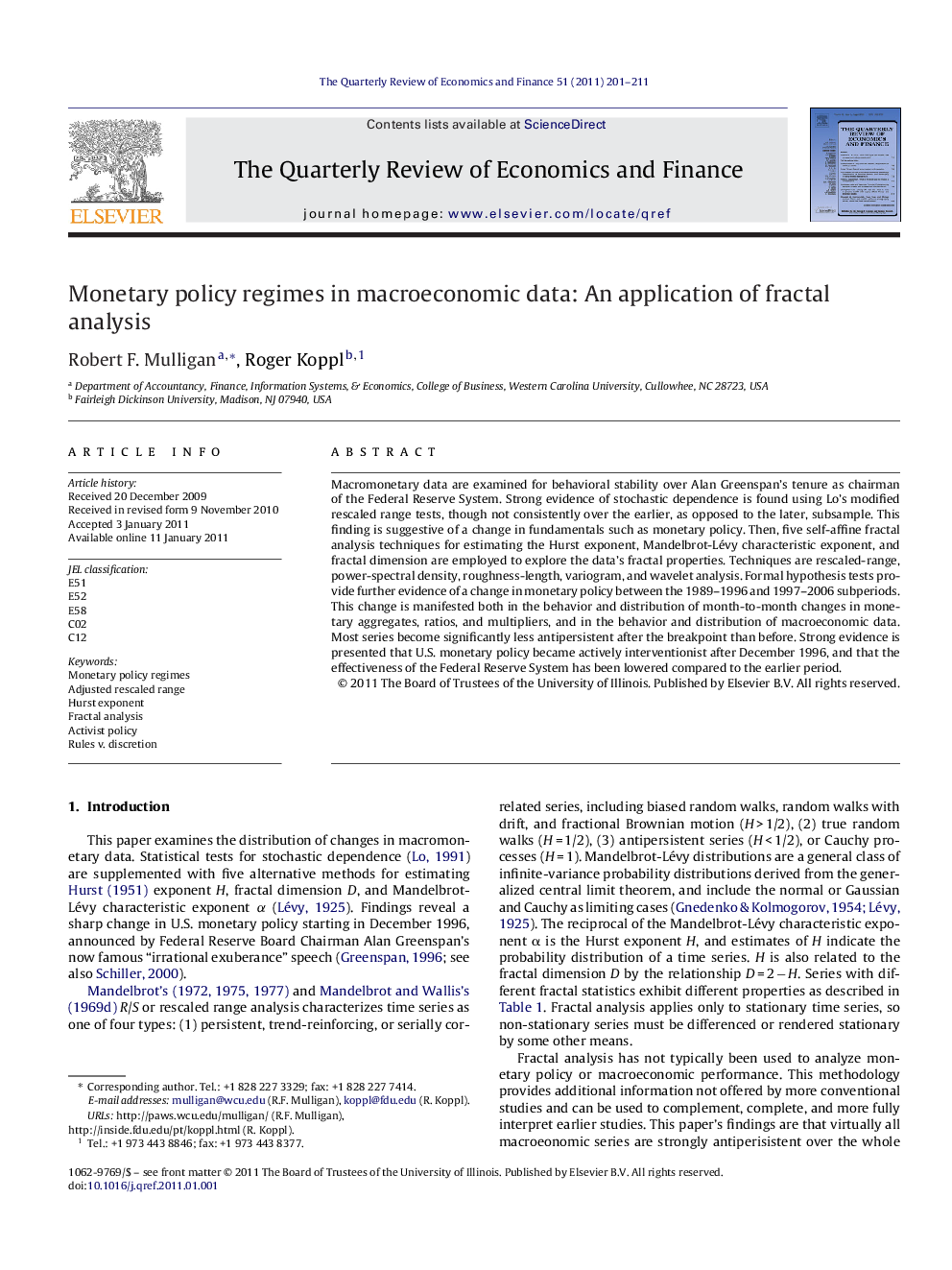| Article ID | Journal | Published Year | Pages | File Type |
|---|---|---|---|---|
| 980421 | The Quarterly Review of Economics and Finance | 2011 | 11 Pages |
Macromonetary data are examined for behavioral stability over Alan Greenspan's tenure as chairman of the Federal Reserve System. Strong evidence of stochastic dependence is found using Lo's modified rescaled range tests, though not consistently over the earlier, as opposed to the later, subsample. This finding is suggestive of a change in fundamentals such as monetary policy. Then, five self-affine fractal analysis techniques for estimating the Hurst exponent, Mandelbrot-Lévy characteristic exponent, and fractal dimension are employed to explore the data's fractal properties. Techniques are rescaled-range, power-spectral density, roughness-length, variogram, and wavelet analysis. Formal hypothesis tests provide further evidence of a change in monetary policy between the 1989–1996 and 1997–2006 subperiods. This change is manifested both in the behavior and distribution of month-to-month changes in monetary aggregates, ratios, and multipliers, and in the behavior and distribution of macroeconomic data. Most series become significantly less antipersistent after the breakpoint than before. Strong evidence is presented that U.S. monetary policy became actively interventionist after December 1996, and that the effectiveness of the Federal Reserve System has been lowered compared to the earlier period.
